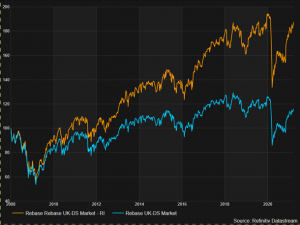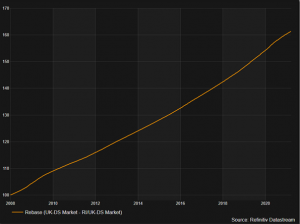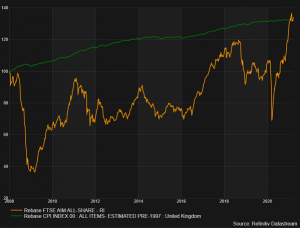At Slater Investments we have a variety of characters. Some of us favour a bit more excitement, others prefer steady progress and lower risk. The trick is to have a good combination. The problem with exciting investments is that they come and go so quickly, moving fast and maybe later becoming embedded in masonry. The best time to buy a share is just before it goes up and the best time to sell is just before it goes down. Simple enough. For a private investor with terrific judgement this can be achieved. Fund managers unfortunately have to look a few steps in advance because most shares are illiquid when traded at scale. It’s easy to bid a price up and equally easy to clatter it on the way out. Private investors may be annoyed when they see companies placing new shares with fund managers at a discount. This is often unavoidable as otherwise there is often no other way to raise money quickly and these days most placings close after only a few days. We often take part in placings as they are an efficient way to build positions. Placings aside, the safest approach is to buy steadily.
Trying to time the market is tricky but it also misses a key ingredient in performance: the reinvestment of dividends and disposals.

Here we see the stark difference between the return from share price gains alone and the total return including reinvested dividends. The next chart makes this even clearer. Over the 13 years since January 2008 the FTSE250 including dividends ploughed back in has returned 60% more than share prices on their own. Investor can simply bank the dividends and use them to have a good time. After a year of lockdowns it sounds like a plan. But dividends reinvested have been able to compound at a modest-sounding 3.8% per year. After 13 years that becomes 62% extra and it pays for a proper blow-out vacation.

Admittedly, compounding can only get you so far. If dividends are modest and capital returns derisory, then even maintaining value in real terms may seem an achievement. This sad chart compares how the AIM market has fared, even with the odd rare dividend, compared to the UK Consumer Prices Index. Basically no real return.

We do own many AIM shares but we are selective and our performance is far, far better. Regular investment and reinvestment does lead to better returns. It’s bound to.
At the level of the individual investor, take the example here of Jim. He gave up smoking in his forties – a habit which cost him £200 a month. He decided to save up this monthly £200 and invest the entire £2,400 annual saving at each year-end into his chosen fund (a fund on which he spent an initial outlay of £10,000). Given a compound annual growth rate (CAGR) in the fund of 8.11% over a ten year period – and incorporating the annual £2,400 investment – the value of his investment after a decade will be £74,179.59. Bearing in mind that his actual cash outlay was £34,000 over the ten years {£10,000 initial outlay + (£2,400 annual investments x 10years)}, and that his investment is now worth nearly £75,000 based on a CAGR of only 8.11%, the astonishing power of compound growth is clearly visible. (NB this example is for illustrative purposes only and doesn’t take into consideration charges).
Back at the fund level, the Slater Growth fund process shows that growth companies have the ability to compound, too – so long as profits are run. Stock selection can be headbangingly hard, but the value of compounding is simple and true.
Important: Slater Investments Limited does not offer investment advice or make any recommendations regarding the suitability of its products. No information contained within this article should be construed as advice. Should you feel you need advice, please contact a financial adviser. Past performance is not necessarily a guide to future performance. The value of investments and the income from them may fall as well as rise and be affected by changes in exchange rates, and you may not get back the amount of your original investment.
